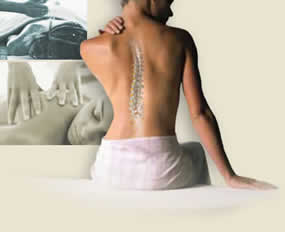Bulging disc commonly known as slipped disc are one of the most commonly found spinal injury or disorder. This problem usually occurs in the neck or cervical area as well as lumbar or lower back area of the spine. Bulging disc usually occurs when the intervertebral discs sustain an injury. Usually with age the fibrous portion of these discs starts to wear off which leads to the soft jelly like core of these disc to burst out to the outer rim that causes the disc to bulge outwards. When this bulging disc starts to put pressure on the nerves exiting the spine the patient suffers from pain in the neck, back as well as back which also triggers other symptoms of bulging disc like tingling and numbing sensation in buttocks, legs and feet, pain that trickle down to the arms and the fingers.
 Bulging Disc Diagnosis
Bulging Disc Diagnosis
Usually a bulging disc doctor starts the diagnosing process of bulging discs with a thorough physical examination and study of the patient’s medical history as well as symptoms he/she is suffering. Doctors can also order imaging diagnostic tests like MRI or magnetic resonance imaging, CAT scan as well as X-ray to get to the crux of the problem.
Bulging Disc Treatment
Bulging disc treatments usually are available in both surgical and non-surgical options. However, most bulging disc doctors prefer conservative treatment options instead of bulging disc surgical treatment option.
Bulging non-surgical treatment options consist of bulging disk physical therapy, exercise programs, massage therapy, cold and hot compression treatment, acupuncture, chiropractic, spine or back braces, TENS (transcutaneous electrical nerve stimulation, which is using an electrical current to stimulate the nerves), ultrasound as well as medications like the NSAIDs (nonsteroidal anti-inflammatory drugs) like ibuprofen as well as muscle relaxants.
Surgical procedure is only considered when conservative treatment options fail to show any recovery signs in the patient.
